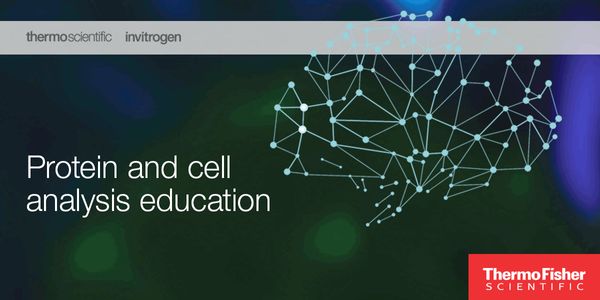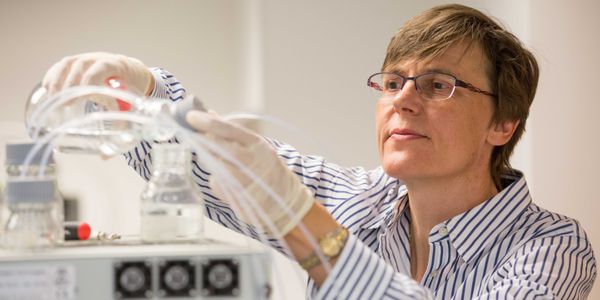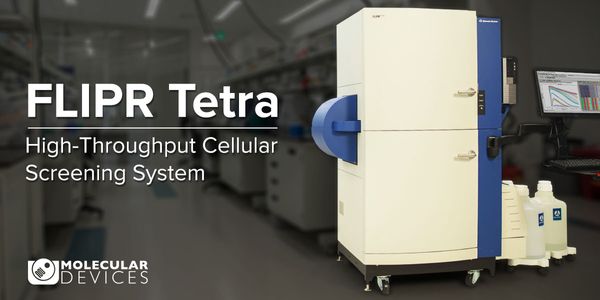Drug Discovery
Drug Discovery: drug discovery is the process by which new candidate medications are discovered. Historically, drugs were discovered through identifying the active ingredient from traditional remedies or by serendipitous discovery. Modern drug discovery involves the identification of screening hits, medicinal chemistry and optimization of those hits to increase the affinity, selectivity (to reduce the potential of side effects), efficacy/potency, metabolic stability (to increase the half-life), and oral bioavailability.
-
NOV 14, 2018 | 3:00 PMNeuronal migration defects, including pachygyria, are among the most severe developmental brain defects in humans. Using human genetics approaches, we recently identified bi-allelic truncatin...NOV 07, 2018 | 8:00 PMDATE: November 7, 2018TIME: 8:00PM PSTExosomes have been shown to have significant roles in cancer including disease progression acting in the tumor micro-environment, metasta...NOV 07, 2018 | 7:00 AMDATE: November 7, 2018TIME: 7:00AM PDTExosomes have been shown to have significant roles in cancer including disease progression acting in the tumor micro-environment, metastasis a...NOV 06, 2018 | 12:00 AMThe last decade has seen a significant shift in the way that mammalian cells are used in biomedical science. Researchers are increasingly turning from simple, reductionist recombinant cells t...NOV 05, 2018 | 12:00 AMBiomedical researchers are increasingly using advanced human cell models for translational biology and therapeutic discovery studies. These include patient-specific samples, cultured micro-ti...NOV 02, 2018 | 12:00 AMDespite exciting recent developments in neuroscience, identifying novel, truly effective treatments for patients with neurological and psychiatric conditions remains highly challenging. There...NOV 01, 2018 | 12:00 AMIntegrated protocols and live-cell analysis solutions for different 3D tumor modelsIn the search for greater clinical translation, cancer researchers are increasingly turning to more comp...NOV 01, 2018 | 12:00 AMAlongside intense efforts to exploit T-cells as immunotherapies for cancer (e.g. checkpoint inhibitors, CAR-T, T-cell metabolism), researchers are increasingly considering other immune cell t...NOV 01, 2018 | 12:00 AMKinetic antibody internalization assays using live-cell analysisMonoclonal antibodies (mAb) and antibody-drug conjugates (ADCs) are widely used biological therapeutics. A key property of...NOV 01, 2018 | 12:00 AMDeriving deeper biological insight & improving productivity in immune-cell biologyThe most common in vitro methods for immunologists to analyze cells of the immune system are flow cyt...OCT 30, 2018 | 10:00 AMDATE: October 30, 2018TIME: 10:00am PT, 1:00pm ET Identification and quantification of post-translational modifications (PTM) presents a unique challenge to proteomic studies...OCT 23, 2018 | 7:00 AMDATE: October 23, 2018TIME: 7:00AM PDTHigh Throughput Screening for the European Lead Factory (ELF) has been performed at Pivot Park Screening Centre (PPSC). 72 HTS campaigns have...Two projects looking at novel approaches to targeting inflammatory breast cancer will be presented. Inflammatory breast cancer (IBC) is a unique, understudied, and most lethal subtype account...Speaker: Kevin Williams, PhD
The oncogenic transcription factor c-MYC (MYC) is deregulated, and often overexpressed, in more than 50% of cancers. MYC deregulation is associated with poor prognosis and aggressive disease,...
Speaker:
Jason De Melo, PhD
In the past two decades a small number of infrequently dividing cells have been proposed as the source of multi-drug resistance during cancer treatment. These cells identified by their expres...
Speaker:
Krastan Blagoev, PhD
PacBio Sequencing simultaneously provides long sequence reads, high consensus accuracy, minimal sequence bias, and methylation detection. I will highlight new advances and updates on applying...
Speaker:
Jonas Korlach, PhD
RNA sequencing unlocks the mysteries hidden in the transcriptome. Whether your goal is gene expression analysis, gene fusion analysis, SNP analysis or miRNA expression analysis, achieving hig...
Speaker:
Jonathan Shaffer, PhD, MBA
To date the anatomic extent of tumor (TNM-classification) has been by far the most important factors to predict the prognosis of cancer patients. However, this classification provides limited...
Speaker:
Jerome Galon, PhD
High-throughput screening is widely useful in identifying genes and pathways that drive changes in cell behavior such as cell cycle regulation, metastasis, and drug resistance. Millipor...
Speaker:
Andrew Ravanelli, PhD
In prior work, we have pursued how tumor reactive monoclonal antibody (mAb), together with activators of innate immune cells, like NK cells, can augment antibody dependent cell-mediated cytot...
Speaker:
Paul Sondel, MD, PhD
























